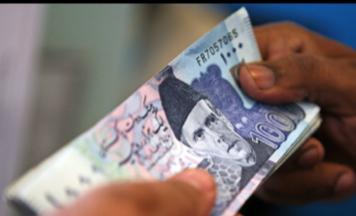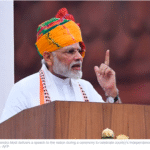Pakistan’s currency, the rupee, has reached a new all-time low against the US dollar, hitting Rs288 in the interbank market. This depreciation comes amid delays in the revival of the International Monetary Fund (IMF) loan program and the looming risk of default on foreign debt repayment. The rupee has been struggling in recent months, with last month seeing a record low of Rs285.09 per US dollar on February 3, 2023.
One of the reasons behind the rupee’s decline is the panic buying of US dollars by importers, as the supply of foreign currency remains low in the interbank market. Market talks suggest that this situation has been exacerbated by the delay in the resumption of the IMF loan program, which has led to choking inflows of foreign financing. Pakistan’s foreign exchange reserves have depleted to a critically low level of $4.2 billion, posing a serious threat of default on foreign debt repayment in the near future.
The government has been in talks with the IMF since late January to resume the stalled loan program worth $6.5 billion, and Finance Minister Ishaq Dar is scheduled to visit the United States on April 10-16 to make efforts towards this end. However, the delay in the resumption of the loan program has been attributed to heightened political and economic instability in the country, leading to a lack of aid from the IMF and other friendly countries.
In addition to the IMF loan program, Pakistan is also looking toward Saudi Arabia for a potential bailout package. The government has mentioned that Saudi Arabia has signaled a new bailout package, but the details and timing of the rollout remain uncertain. Pakistan is facing import payment pressure, and the government had fully reopened imports on the recommendation of the IMF, leading to increased demand for US dollars in the market.
The depreciating rupee and low foreign exchange reserves highlight the economic challenges that Pakistan is currently facing. The country needs to address its political and economic instability to restore investor confidence, attract foreign investment, and stabilize its currency. Resuming the IMF loan program and securing support from friendly countries, including Saudi Arabia, could provide some relief, but long-term structural reforms and measures to improve the country’s economic fundamentals are necessary for sustainable economic growth.
Pakistan’s rupee hitting an all-time low against the US dollar at Rs288 is a concerning development for the country’s economy. The delay in the revival of the IMF loan program, panic buying of US dollars by importers, and low foreign exchange reserves are contributing factors to this situation. Pakistan needs to address its economic challenges, restore investor confidence, and implement long-term reforms to stabilize its currency and ensure sustainable economic growth. Immediate measures to secure support from the IMF and friendly countries, along with efforts toward political and economic stability, are crucial to overcoming the current economic crisis. Overall, Pakistan’s economy requires concerted efforts and strategic planning to navigate through these challenging times and pave the way for a stronger and more stable future.














